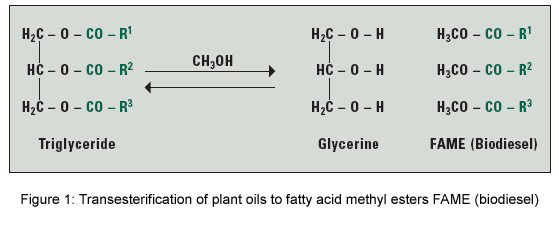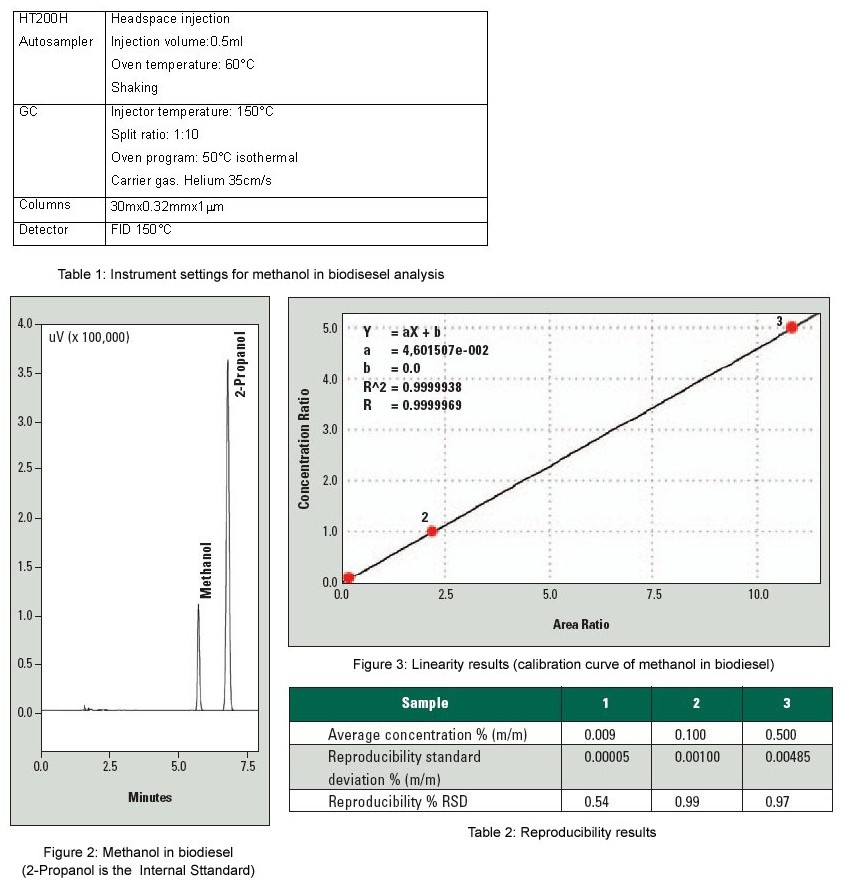Methanol in Biodiesel
Reference Method: DIN EN 14214

Introduction
Biodiesel is an interesting alternative to the decreasing resources of mineral fuels.
Biodiesel production has increased considerably in Europe in recent years, especially under the impulse of the automotive industry.
In the production of biodiesel, plant oils or animal fats are converted to fatty acid methyl esters (FAME).
Transesterification is used to convert triglycerides to FAME. The transesterification is performed using methanol and a catalyst (alkali hydroxide or alkali alcoholate). After the reaction, the excess methanol and other by-products must be removed to create a fuel suitable for use in diesel engines.
To ensure fuel quality, The DIN EN 14214 standard specifies the maximum concentrations for the by-products. Besides, the DIN EN 14110 standard defines a method for the determination of the methanol in biodiesel.
Biodiesel can consist of up to 100 different FAME. For the identification of methanol in such a complex matrix, gas chromatography in combination with headspace injection is the method of choice. This allows separation of methanol (low boiling point) from the FAME (high-boiling point) during the sample preparation
Experimental conditions
In this work the biodiesel samples are analyzed by headspace-GC-FID. Each sample is analyzed with a GC equipped with an HT200H autosampler.
The biodiesel samples are shaken and heated to 60 °C for a given time. Methanol is enriched in the gas-phase because of its low-boiling point, while the high-boiling point compounds remain in the liquid phase. When the equilibrium is reached, a volume is drawn from the gas phase(headspace) of the vial and injected into the GC system.
A calibration curve containing 0.01, 0.1 and 0.5 % (m/m) methanol in FAME, in accordance with DIN EN 14110 is prepared. 2-propanol is added as internal standard.
This calibration curve is shown in Figure 3, confirming the high linearity obtained with this system.
Also the reproducibility of measurements is calculated, as shown in Table 2. Reproducibility is higher than the requirements according to DIN EN 14110.
In conclusion this HS-GC-FID system, using HT200H headspace autosampler, represents an efficient and precise solution for the methanol determination in biodiesel. Besides HT200H autosampler can prepare several samples simultaneously to assure the high sample throughput.
Instrument settings



